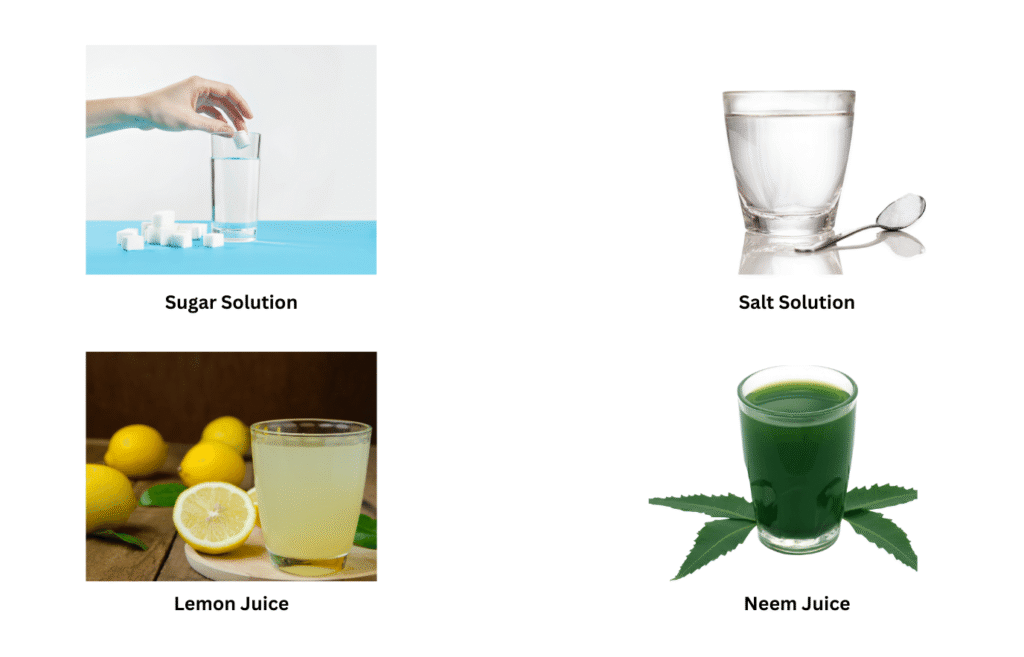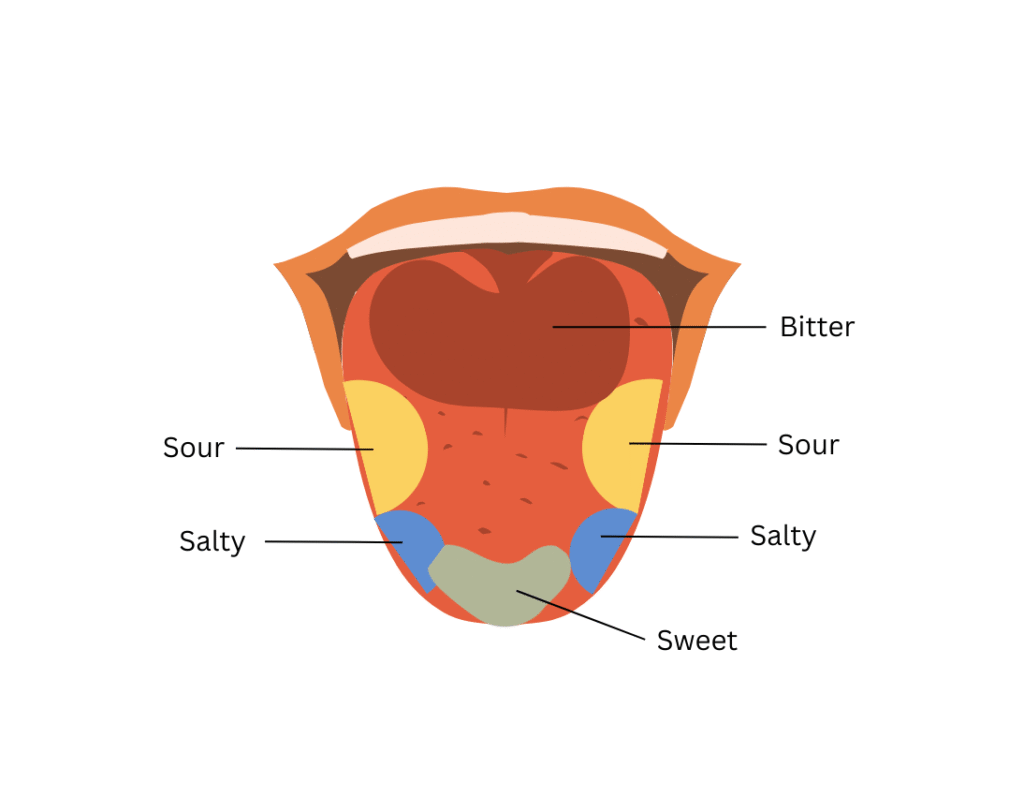4. Complete Activity 2.4. (Page 15)
1. Prepare a separate sample each of (i) sugar solution, (ii) common salt solution, (iii) lemon juice and (iv) juice of crushed neem leaf or bitter gourd.
2. Blindfold one of your classmates and ask her/him to take out the tongue and keep it in straight and flat position.
3. Use a clean toothpick to put the above samples one by one on different areas of the tongue as shown in Fig. 2.6. Use a new toothpick for each sample.
4. Ask the classmate which areas of the tongue could detect the sweet, salty, sour and bitter substances.
5. Now write down your observations and label Fig. 2.6. Repeat this activity with other classmates.
Answer:
You can determine the different regions of the tongue by doing the following activity:
Aim: To identify the different regions of the tongue for different tastes.
Materials Required: Sugar solution, common salt solution, lemon juice, juice of crushed neem leaf or bitter gourd.
Procedure: Prepare four different solutions: sugar solution, common salt solution, lemon juice, and juice of crushed need leaf or bitter gourd.

(ii) Blindfold one of your classmates and ask them to extend their tongue outwards in a straight and flat position.
(iii) Dip a clean and new toothpick in each of the above solutions one by one on each of different regions of the tongue.
(iv) Ask the classmate which areas of the tongue are able to detect the sweet, salty, sour and bitter substances. Write down your observations and label Fig. 2.6.
Observations: You will notice that if you have carried out the experiment correctly the different regions of the tongue can be marked as shown below:

Conclusion: We conclude that different regions of the tongue detect different tastes. Sweet taste can be detected at the front, sour and salty tastes on the sides and bitter taste at the back of the tongue.
Solution to Extended Learning Problem 1
Solution to Extended Learning Problem 2
Solution to Extended Learning Problem 3
Solution to Activity 2.1
Solution to Activity 2.2
Solution to Activity 2.3
Solutions to Chapter 2 Nutrition in Animals


